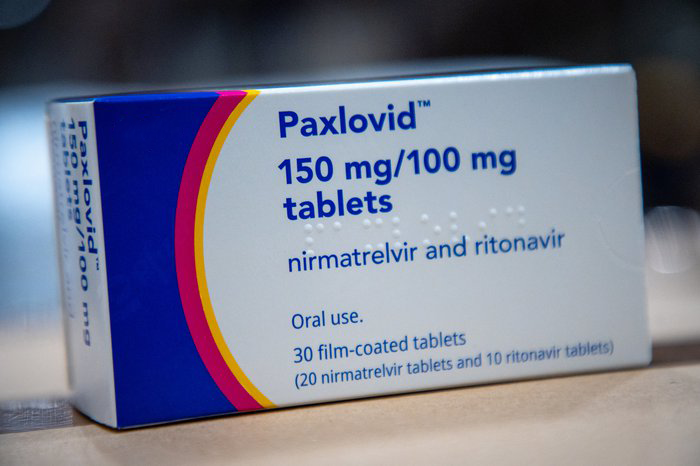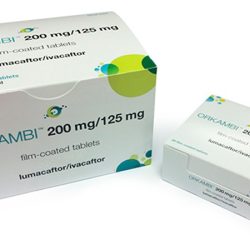Description
Nirmatrelvir/Ritonavir is a co-packaged oral medicine, authorized for the treatment of mild-to-moderate COVID-19 in adults (12 years of age and older and weighing at least 40 kg or 88 lbs) with positive results of direct SARS-CoV-2 viral testing, and who are at an increased risk for progression to severe COVID-19 disease, including hospitalization or death. As an antiviral monotherapy (Nirmatrelvir Ritonavir), it is active against SARS-CoV-2, including Alpha, Beta, Gamma, Delta, and Omicron variants of concern, but not authorized:
for use in those requiring hospitalization due to severe or critical COVID-19.
for pre/post-exposure prophylaxis for the prevention of COVID-19.
for use beyond five consecutive days.
Note:
Nirmatrelvir/Ritonavir has an Emergency Use Authorisation (EUA) from the US Food and Drug Administration. Dosage:Nirmatrelvir tablets co-packaged with ritonavir tablets. Nirmatrelvir must be used with ritonavir. Failure to precisely co-administer nirmatrelvir with ritonavir may result in plasma levels of nirmatrelvir that will be not sufficient to get the desired therapeutic effect.
The recommended dosage is 300 mg nirmatrelvir (two 150 mg tablets) with 100 mg ritonavir (one 100 mg tablet) with all 3 tablets taken together by mouth (orally) twice daily for 5 consecutive days. Patients must finish the complete 5-day treatment course. The route of administration of Nirmatrelvir Ritonavir tablet is oral (by mouth). The proposed tablets should be swallowed whole and not be broken, chewed, opened, or crushed for dispersion.
Treatment with this antiviral FDC medicine should be started as quickly as possible after positive results of direct SARS-CoV-2 viral testing and within five days of symptom onset.
Side Effects:Typically side effects are minimal and temporary. The most commonly reported Nirmatrelvir and Ritonavir side effects are:
- Diarrhea
- muscle pain
- high blood pressure
- change in sense of taste
Warnings and Precautions:
Initiation of nirmatrelvir/ritonavir, a CYP3A inhibitor, in those taking medicines metabolized by CYP3A or initiation of medicines metabolized by CYP3A in those already taking this antiviral, may rise plasma concentrations of medicines metabolized by CYP3A. Initiation of drugs that block or induce CYP3A may rise or decline the concentrations of nirmatrelvir/ritonavir, respectively.
Anaphylaxis and certain other hypersensitivity reactions may occur with nirmatrelvir/ritonavir. Cases of Toxic Epidermal Necrolysis and Stevens-Johnson syndrome may be reported with ritonavir, a component of this medicinal product. If signs/symptoms of a clinically significant hypersensitivity reaction or anaphylaxis occur, promptly discontinue treatment and initiate suitable medicines or supportive care.
Hepatic transaminase elevations, clinical hepatitis, and jaundice may occur in patients receiving ritonavir. Therefore, precise caution must be considered when administering Nirmatrelvir 150 mg and Ritonavir 100 mg Tablets to patients with pre-existing liver complications, liver enzyme abnormalities, or hepatitis.
Because nirmatrelvir 150 mg is co-administered with ritonavir 100 mg, there may be a risk of human immunodeficiency virus-1 establishing resistance to HIV protease inhibitors in all those with undiagnosed or uncontrolled HIV-1 infection.
Women of childbearing age should use relevant contraception during nirmatrelvir and ritonavir treatment. The use of ritonavir may decline the efficacy of combined hormonal contraceptives. Those using combined hormonal contraceptives should use an apt alternative contraceptive method or an additional barrier method of contraception during treatment.




